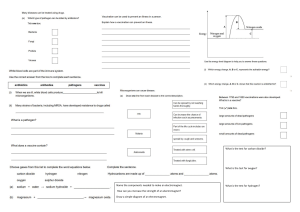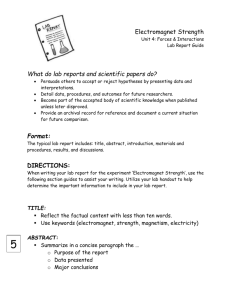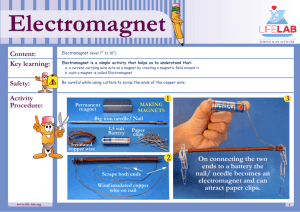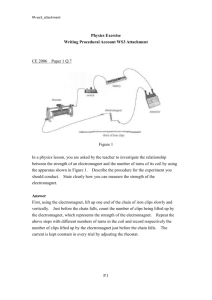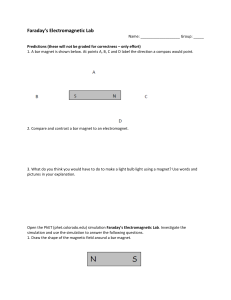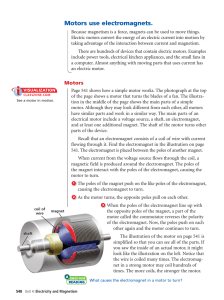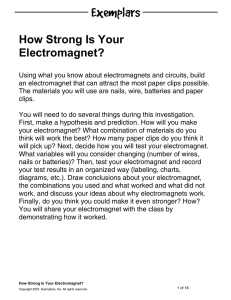Can you change the poles of an electromagnet?
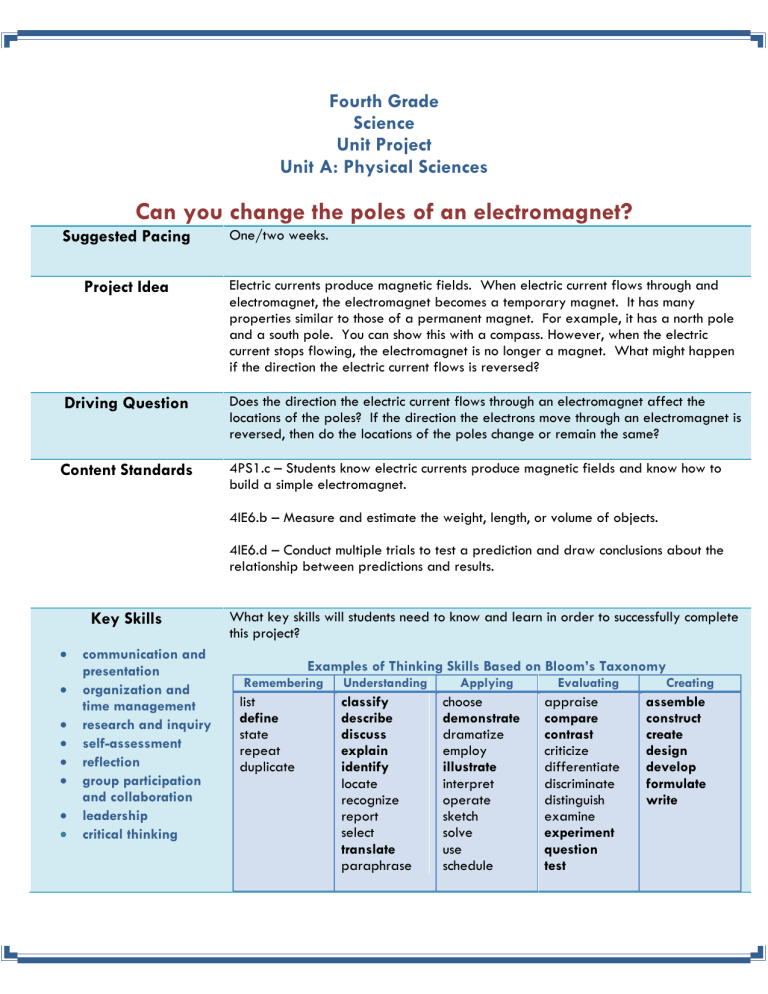
Fourth Grade
Science
Unit Project
Unit A: Physical Sciences
Can you change the poles of an electromagnet?
Suggested Pacing
One/two weeks.
Project Idea
Driving Question
Electric currents produce magnetic fields. When electric current flows through and electromagnet, the electromagnet becomes a temporary magnet. It has many properties similar to those of a permanent magnet. For example, it has a north pole and a south pole. You can show this with a compass. However, when the electric current stops flowing, the electromagnet is no longer a magnet. What might happen if the direction the electric current flows is reversed?
Does the direction the electric current flows through an electromagnet affect the locations of the poles? If the direction the electrons move through an electromagnet is reversed, then do the locations of the poles change or remain the same?
Content Standards
4PS1.c – Students know electric currents produce magnetic fields and know how to
Key Skills
• communication and presentation
• organization and time management
• research and inquiry
• self-assessment
• reflection
• group participation and collaboration
• leadership
• critical thinking build a simple electromagnet.
4IE6.b – Measure and estimate the weight, length, or volume of objects.
4IE6.d – Conduct multiple trials to test a prediction and draw conclusions about the relationship between predictions and results.
What key skills will students need to know and learn in order to successfully complete this project?
Examples of Thinking Skills Based on Bloom’s Taxonomy
Remembering Understanding Applying Evaluating Creating list define state repeat duplicate classify describe discuss explain identify locate recognize report select translate paraphrase choose demonstrate dramatize employ illustrate interpret operate sketch solve use schedule appraise compare contrast criticize differentiate discriminate distinguish examine experiment question test assemble construct create design develop formulate write
Products
What will the products be?
Visual Construct
Examples of Products
Oral Multimedia Written chart drawing timeline diagram
Thinking Map map comic book cover poster model sculpture diorama miniature art gallery museum exhibit mobile debate panel discussion lesson report play
Reader’s
Theater
Press
Conference talk show monologue poem song illustrated book newspaper
TV show
Powerpoint video poetry photo essay video monologue news report web-page response to literature report article
Pre-Requisite Skills
Chapter 2, Lesson 3 – How are electric currents and magnetic fields related?
Project Launch
Differentiation
Vocabulary : electromagnet
Chapter 2, Lesson 4 – How are electromagnets used?
Vocabulary: generator
Activity Video: Prepare for and rehearse the activity before class. (Teacher
Material)
Printable Activity Rubric: www.pearsonsuccessnet.com
TE pages 80 and 81
Printable LabZone Activity www.pearsonsuccessnet.com
Special Needs:
• Preferential placement
• Peer assistance
• Selective grouping
English Learners:
• Digital Active Glossary
• Vocabulary Cards – Science notebook pages 15 and 16
• Solicit alternative names for the materials in home language.
• Post names of materials and other academic language such as electromagnet, compass, north, south, direction, reverse, and electrons on a word wall
Diverse Learning Styles
Engage all learning modalities through:
• Audio – songs, rhymes
Resources Needed
Assessment
• Visual – videos, internet
• Kinesthetic – hands-on learning, dramatizations o
Science Videos o
Internet o
Materials: safety goggles, insulated wire (120cm with ends stripped), iron or steel bolt or rod (4in.), metric ruler, D battery in holder, directional compass, wire cutter and stripper (teacher use) o
Alternative materials: Instead of using a battery holder, the bare ends of the wire could be taped to the end of the battery.
Formative
Assessment
(During the Project) o o o quizzes/tests journal/learning log preliminary plans/outlines/prototypes o rough drafts o online tests/exams o practice presentations o notes o checklist o
Thinking Maps o other: __________________________________
Summative
Assessment
(End of Project) o written products with rubric o oral presentations with rubric o multiple choice/short answer test o essay test o other products or performances o peer evaluation o self evaluation o other:__________________________________
Student Reflection
Methods
How will the students reflect and evaluate? o journal/learning log o whole-class discussion o survey o focus group o fish bowl discussion o formal debrief (student/teacher facilitated) o individual/group evaluations o other: ____________________________________________________________
Teacher Reflection
Does this project: o
Meet standards? o
Engage students? o
Focus on essential understanding? o
Encourage higher-level thinking? o
Teach literacy and reinforce basic skills? o
Allow all students to succeed? o
Use clear, precise assessments?
